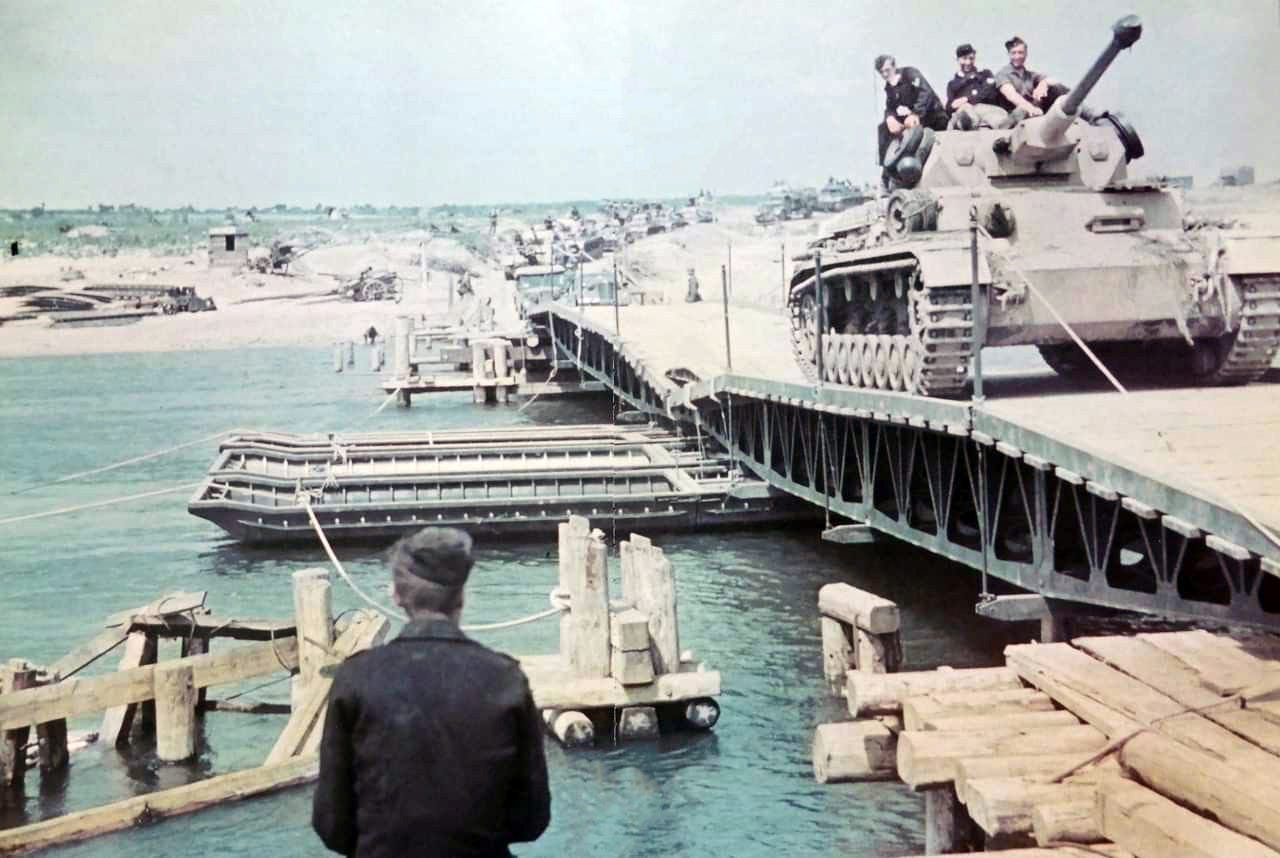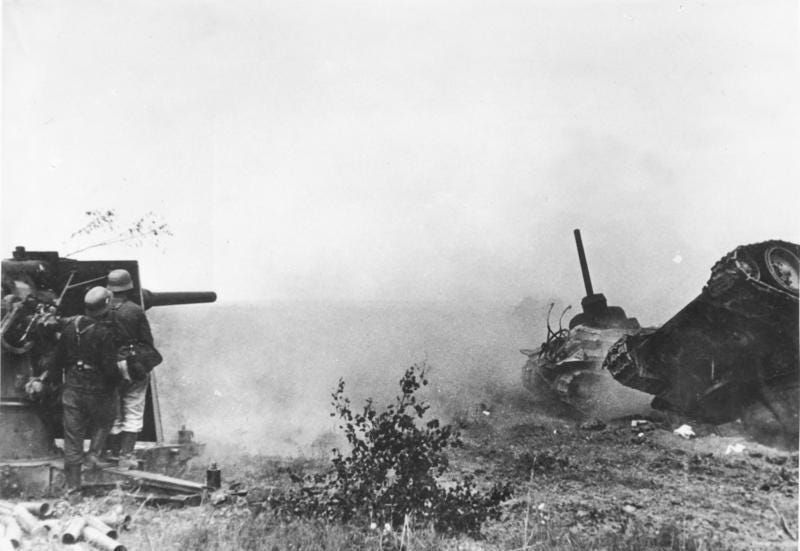The German thrust to Stalingrad
30th July 1942: Hitler's objectives for 'Fall Blau' start to become clearer to all - but the rapid Wehrmacht advance is coming at a heavy price
Hitler had launched his eastern offensive for 1942 on the 28th June and had then intervened to split Army Group South in two on the 23rd July. The Allies - America, Britain and Russia - could only watch the situation closely and try to guess what the ultimate objectives were:
The German offensive has now been in progress for a month and, in its swing south-eastwards, has made progress at an average of 12 to 13 miles a day - a rate only slightly slower than the fastest advances of last year. The Germans have made no claims to large numbers of prisoners and the Russians themselves state that their withdrawal has been orderly.
‘The Germans now appear to be thrusting in three directions - eastward against the Middle Don, with Stalingrad, an important tank manufacturing centre, as the probable objective’ …
This withdrawal may have been eastwards towards Stalingrad, for the rapidity of the German advance and, in particular, the speed with which they crossed the Lower Don, suggest that the Russians have been unable to withdraw any large forces to the south of the river and that their powers of resistance have thereby been seriously weakened.
The Germans now appear to be thrusting in three directions - eastward against the Middle Don, with Stalingrad, an important tank manufacturing centre, as the probable objective; south-eastward over the Don at Tsimlyanskaya against the railway Stalingrad-Tikoretsk; and south-westward over the Don near Rostov, towards the line Armavir-Maikop-Tuapse. At Maikop is the smallest and nearest of the Caucasian oilfields, with an annual output of some 2,500,000 tons.1

The lines on the map looked ominous but the German advance was bedevilled by supply problems, which sometimes stalled local offensives. The previous commander of Army Group South, Fedor von Bock, had predicted this and had been sacked for his troubles.


There were also signs that that the Germans were taking much heavier casualties than they could sustain. Some units were being decimated. Although the Soviet Army also had heavy losses they were better able to absorb them. An illustrative report from this time comes from the diary of a German military pastor:
The number of the dead is increasing, the number of the wounded is frightful. In my black book there is already one black cross after another, my whole congregation is almost completely dead or wounded .....
“There lies my old guard. In fact we too should be there. Then it would all be over"
Then last night we carried the dead out of the trenches and from no man’s land .... Our cemetery in Bukan has grown tremendously. At first there were only a few graves, now there are already over 400, all in a few days. And how many more will die later in the first aid stations in the rear, or lie in another cemetery?
One regiment has brought its sacrifice. The colonel’s face has grown terribly thin over these last few days-sleepless nights, turbulent hours .... He stands silently in front of the long rows of graves: “There lies my old guard. In fact we too should be there. Then it would all be over"2

From the Military Situation Report for the week ending 30th July 1942, as reported to the British War Cabinet, see TNA CAB 66/27/4
From Omer Bartov: Hitler's Army: Soldiers, Nazis, and War in the Third Reich. See also Wilhelm Adam: With Paulus at Stalingrad on the lack of replacements for casualties in the 6th Army.




